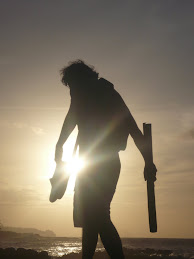Photo: High Island [photo credit: http://tropicalparadise.net].
Photo: Low Island (Ifira Island).
When we understand the importance of water and the watersheds which catch, store, filter & deliver our fresh water to us, we gain a deeper understanding of where we fit in to the ecology of a place.
Permaculture Publications managed to record, transcribe, and publish to the public domain a series of lectures from a PDC given by Bill Mollison in 1981 (New Hapshire, USA). The treatise he gives on High Islands & Low Islands are excellent (and highly entertaining, if you can manage to read them in a lazy aussie drawl to fully capture the dry ironic undertone in his delivery).There are both High & Low Islands on Vanuatu, so it is important to understand the way each is formed if we are to understand the differences in managing & protecting their watersheds. Download: 'Permaculture on Islands', by Bill Mollison (1981)For a detailed description of these differences, download the above Mollison transcript (well worth the read), for the cliff notes, see below:
High Islands:
• Air is funneled up the mountains of the windward side.
• Clouds form as condensation occurs at upper levels.
• Most rain is dropped on windward side.
• Rain shadow is created on leeward side.
• Upland forests seeds clouds with transpiration, which increases precipitation.
• Over time, forests can descend from the upper slopes of the leeward side.
• Clouds follow the forest into rain shadow.
• Watersheds filter water through sedimentation, solarization, oxygenation & filtration.
• Trees protect the watershed.Low Islands:
• Bird droppings (phosphates) & sand (calcium) form basis of soil.
• Pioneer plan species must break through 'platen' layer of phosphate + calcareous sands.
• Once platen layer is penetrated by pioneers, groundwater table can form.
• Organic matter from vegetation creates humus for succession species.
• Groundwater table only 3-5 feet deep.
• If groundwater is overdrawn, salt water can get in.
• This groundwater is shallow & must be protected!
• Surface water catchment strategies help protect groundwater.
• Low islands must be protected w/ trees or wind & waves will quickly erode.
• Trees protect the island & watershed.


No comments:
Post a Comment